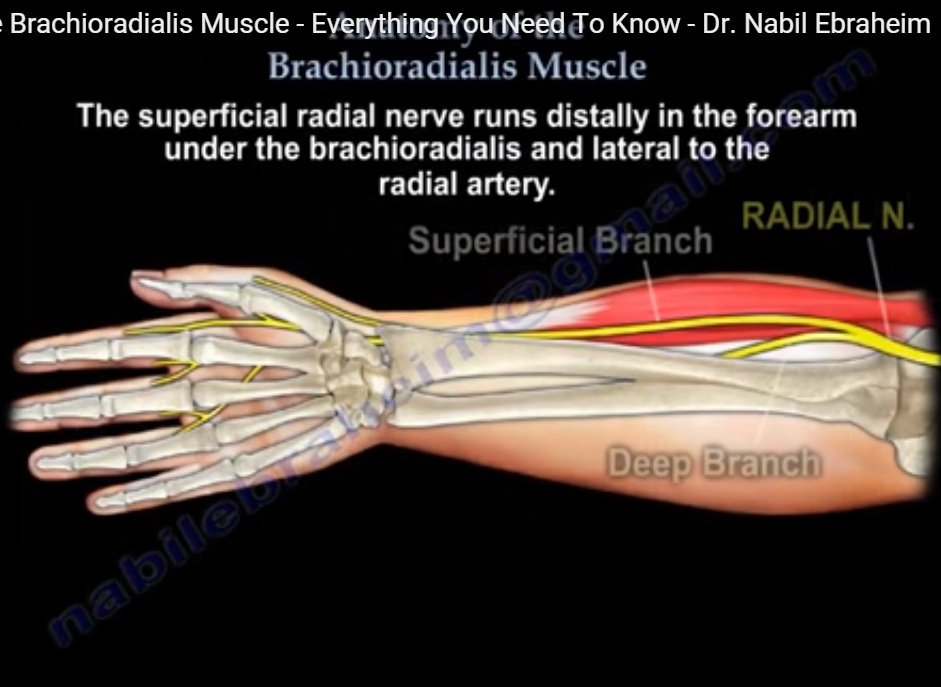Courtesy: Prof Nabile Ebraheim, Unversity of Toledo, Ohio, USA
BRACHIORADIALIS: The brachioradialis is a muscle of the forearm that flexes the forearm at the elbow.
- Origin-Proximal 2/3 rd of lateral supracondylar ridge of humerus
- Insertion-Lateral surface of styloid process of radius
- Nerve Supply- Radial nerve
- Function-Flexion of elbow, supination and pronation of the radioulnar joint to 90°
- Superficial radial nerve runs distally in forearm under brachioradialis and lateral to the radial artery
Wartenberg syndrome
- Superficial radial nerve is compressed by the scissoring effect of brachioradialis and extensor carpi radialis longus tendon during forearm pronation
Brachioradialis reflex and wrist extension is associated with radial nerve and it is affected with weakness of wrist extension, there can also be paraesthesia of thumb and possibly index finger
Inverted radial reflex: Tapping of the distal brachioradialis produces ipsilateral finger flexion and is usually seen when spinal cord is compressed
To approach radius in volar aspect we need to go in between the brachioradialis and flexor carpi radialis. And in the approach to distal humerus one need to go between the brachioradialis and brachialis
The radial nerve ends by giving branches to brachioraialis, extensor carpi radialis longus and extensor carpi radialis brevis. If injury to radial nerve occurs at spiral groove it might take about 4 months to recover, if this doesnot occur then exploration is required.

Leave a Reply